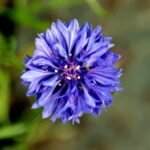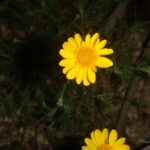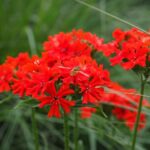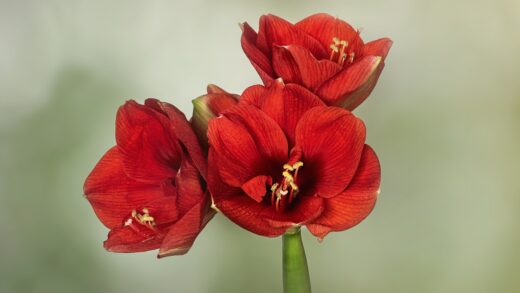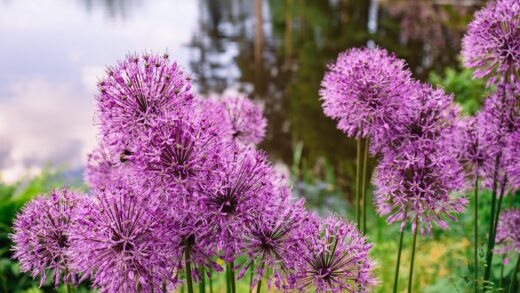Overwintering the black-eyed susan vine

The black-eyed susan vine is a tender perennial, native to the warm climates of Eastern Africa. While it can live for several years in tropical or subtropical regions (USDA zones 10-11), in most temperate climates it is treated as an annual because it cannot survive freezing temperatures. However, for the dedicated gardener who wishes to preserve a particularly beautiful specimen or cultivar, overwintering is a viable option. This process involves protecting the plant from the cold, either by bringing it indoors as a houseplant or by taking cuttings to propagate for the following spring, ensuring its vibrant display can be enjoyed year after year.
The primary challenge of overwintering is to provide the plant with the right conditions to survive the winter months indoors, a period when light levels are low and growth naturally slows. The goal is not necessarily to encourage active growth and flowering, but rather to keep the plant alive and healthy in a state of semi-dormancy until it can be moved back outside in the spring. This requires a significant reduction in watering and a complete cessation of fertilizing, mimicking the natural cues of a dormant season.
There are two main strategies for overwintering Thunbergia alata. The first is to bring the entire potted plant indoors. This method is suitable for plants grown in containers that are a manageable size. The second, and often more practical method, is to take stem cuttings from the parent plant in late summer or early autumn. These small cuttings are much easier to accommodate indoors over the winter and can be grown into new, vigorous plants for the next season.
Regardless of the method chosen, the transition from outdoors to indoors must be managed carefully. Plants need to be thoroughly inspected for any pests before being brought inside to prevent infestations from spreading to other houseplants. They also need a period of acclimatization to the lower light and humidity levels found indoors. Successful overwintering requires attention and patience, but the reward is a head start on the next growing season with a mature plant or well-rooted cuttings.
Preparing the plant for indoors
The preparation for overwintering should begin in late summer or early autumn, well before the first expected frost date. A sudden frost can damage or kill the plant, so it is crucial to act preemptively. Select a healthy, vigorous plant for overwintering, one that is free from any obvious signs of disease or significant pest damage. If the plant is in a very large container or in the ground, it may be necessary to pot it up into a more manageable container for the winter.
More articles on this topic
Before bringing the plant inside, it is essential to give it a thorough pruning. The vine can be cut back quite hard, reducing its size by at least half or even two-thirds. This makes the plant much more compact and easier to manage indoors. Pruning also removes any old or weak growth, encouraging the plant to put its energy into maintaining its core health over the winter. This step is particularly important for large, sprawling vines.
A critical step in the preparation process is pest control. Outdoor plants are often home to a variety of insects, such as aphids, spider mites, and whiteflies, which may not be causing a noticeable problem outdoors but can multiply rapidly in the warm, stable environment of a home. Inspect the plant meticulously, paying close attention to the undersides of leaves and the joints of stems. It is highly recommended to treat the plant proactively by spraying it thoroughly with insecticidal soap or horticultural oil a week or two before bringing it in.
The final stage of preparation is the acclimatization process. Do not move the plant directly from its sunny outdoor location into a dim indoor spot, as this sudden change in light levels can cause shock, leading to leaf drop. Instead, gradually acclimate it over the course of a week or so. Start by moving the pot into a shadier location outdoors for a few days, and then bring it indoors to a bright location for a few hours at a time, gradually increasing its time inside.
Indoor care during winter
Once inside, the black-eyed susan vine’s care routine needs to change significantly to reflect its new environment and semi-dormant state. The most important factor is light. Place the plant in the brightest location possible, such as in front of a south-facing window where it can receive several hours of direct sunlight each day. Insufficient light is one of the biggest challenges of overwintering, and if a bright natural light source is not available, the use of a grow light is highly recommended to keep the plant healthy.
More articles on this topic
Watering must be drastically reduced during the winter months. The plant’s growth will slow down considerably, and its water needs will be much lower than during the active growing season outdoors. Allow the top several centimeters of the soil to dry out completely between waterings. When watering, provide enough to moisten the soil, but do not allow the pot to sit in a saucer of water, as this can easily lead to root rot. It is far better to err on the side of keeping the plant too dry rather than too wet during winter.
Fertilizing should be stopped entirely throughout the overwintering period. The plant is not actively growing, so it does not require supplemental nutrients. Feeding a dormant or semi-dormant plant can lead to a buildup of fertilizer salts in the soil, which can damage the roots. Withhold all fertilizer from the time the plant is brought indoors in the autumn until new growth begins to appear in the spring.
The plant may look a bit sparse and may even drop some of its leaves during the winter; this is normal. Monitor it periodically for any signs of pests that may have survived the initial treatment. The low humidity of indoor air can be a breeding ground for spider mites, so occasional misting or placing the pot on a tray of pebbles and water can help to increase the ambient humidity. Be prepared for the plant to look less than its best, and trust that its vigour will return with the spring.
Overwintering with stem cuttings
Taking cuttings is often a more reliable and space-efficient method for overwintering the black-eyed susan vine. In late summer, take several 10-15 centimeter stem cuttings from the healthy, non-flowering tips of the parent plant. Use a clean, sharp blade and make the cut just below a leaf node. Remove the lower leaves from each cutting, leaving only two or three leaves at the top.
The cuttings can be rooted in either water or a sterile rooting medium. To root in water, simply place the cuttings in a jar of water, ensuring that the leafless nodes are submerged. Change the water every few days to keep it fresh. To root in soil, dip the cut end in rooting hormone and plant it in a pot of moist, well-draining mix like perlite and peat moss. Cover the pot with a plastic bag to create a humid environment.
Place the cuttings in a warm location with bright, indirect light. Roots should start to form within a few weeks. Once the cuttings have developed a healthy root system (at least a few centimeters long), they can be potted up into individual small pots with regular potting soil. These new young plants are much easier to manage indoors over the winter than a large, mature vine.
Care for these newly rooted plants as you would a mature overwintering plant. Provide them with the brightest light possible, water sparingly, and do not fertilize. They will remain relatively small and compact throughout the winter. This method has the advantage of starting the next season with fresh, vigorous young plants that are ready to take off as soon as the weather warms up.
Transitioning back outdoors
As spring approaches and the days grow longer, the overwintered plant or rooted cuttings will begin to show signs of new growth. This is the signal to gradually increase watering and to begin a weak fertilization program. Start by feeding with a balanced liquid fertilizer diluted to half-strength every three to four weeks. This will provide the nutrients needed to support the emerging new growth.
Just as the plant was hardened off before coming indoors, it must be hardened off again before moving back outside. This process is crucial to prevent the tender new growth from being scorched by the sun or damaged by wind. Once the danger of frost has completely passed, begin by placing the plant outdoors in a shady, protected spot for a few hours. Over the next one to two weeks, gradually increase its exposure to direct sunlight and outdoor conditions.
Before planting it back into its final summer location, it may be beneficial to give the plant another light pruning to shape it and remove any weak, spindly growth that occurred over the winter. This will encourage bushier, more vigorous growth. If the plant has become root-bound in its pot, it can be repotted into a larger container or planted directly into the garden bed.
Once fully acclimated and planted in its summer home, the overwintered black-eyed susan vine will have a significant head start on plants grown from seed. It will typically begin to grow and flower much earlier in the season, providing a longer period of enjoyment. This successful transition completes the overwintering cycle, rewarding the gardener’s efforts with the return of a cherished plant.
📷 Forest & Kim Starr, CC BY 3.0, via Wikimedia Commons








